-
Posts
20,851 -
Joined
-
Last visited
-
Days Won
49
Everything posted by CaaC (John)
-

Leicester City Discussion
CaaC (John) replied to Stan's topic in Premier League - English Football Forum
-
Planet Nine could be a grapefruit-sized black hole, say astrophysicists We can prove it by looking for the black hole's 'accretion flares', the astrophysicists say. Astrophysicists have suggested that the hypothetical Planet Nine could be a tiny black hole, and they’ve proposed a way to find out. Planet Nine has never been seen directly. But the existence of a ninth planet orbiting our Sun could explain certain features of the outer Solar System, such as the clustering together of icy rocks called ‘trans-Neptunian objects’ with similarly tilted orbits. Last year, scientists in the UK and US suggested that Planet Nine, which is also known as Nibiru, could instead be a primordial black hole. These as-yet-unseen black holes are thought to have formed a fraction of a second after the Big Bang. If Planet Nine was such an entity, it would be about the size of a grapefruit, with a mass of five to ten times that of Earth. An artist’s illustration of a tiny black hole in the outer Solar System ripping apart a comet from the Oort cloud © M Weiss Read more about black holes: A mysterious object may be smallest black hole ever found Researchers verify ‘extremely odd’ black hole physics “LSST has a wide field of view, covering the entire sky again and again, and searching for transient flares,” said study co-author Prof Avi Loeb. “Other telescopes are good at pointing at a known target, but we do not know exactly where to look for Planet Nine. We only know the broad region in which it may reside.” “The outskirts of the Solar System is our backyard,” adds Loeb. “Finding Planet Nine [would be] like discovering a cousin living in the shed behind your home [who] you never knew about.” ScienceFocus
- 1,657 replies
-
- space exploration
- astronomy
-
(and 1 more)
Tagged with:
-
Not raining cats & dogs then but flying ants.
-
Solar Orbiter sees ‘campfires’ on the Sun The first images from ESA’s Solar Orbiter, captured around the spacecraft’s first close pass of the Sun, some 77 million kilometres from its surface, are already exceeding expectations revealing interesting new phenomena on our parent star. This animation shows a series of close-up views captured by the Extreme Ultraviolet Imager (EUI) at wavelengths of 17 nanometers, showing the upper atmosphere of the Sun, or corona, with a temperature of around 1 million degrees. These images reveal a multitude of small flaring loops, erupting bright spots and dark, moving fibrils. A ubiquitous feature of the solar surface, uncovered for the first time by these images, have been called ‘campfires’. They are omnipresent miniature eruptions that could be contributing to the high temperatures of the solar corona and the origin of the solar wind. Captured on 30 May 2020, when Solar Orbiter was roughly halfway between the Earth and the Sun, these are the closest views of the Sun ever taken, allowing EUI to see features in the solar corona of only 400 km across. As the mission continues, Solar Orbiter will go closer to the Sun and this will increase the instrument’s resolving power by a factor of two at closest approach. The colour on this image has been artificially added because the original wavelength detected by the instrument is invisible to the human eye. Solar Orbiter is a space mission of international collaboration between ESA and NASA.
- 1,657 replies
-
- 1
-

-
- space exploration
- astronomy
-
(and 1 more)
Tagged with:
-
A Nuclear blast sends star hurtling across the galaxy A star has been sent hurtling across the galaxy after undergoing a partial supernova, astronomers say. A supernova is a powerful explosion that occurs when some stars reach the ends of their lives; in this case, the blast was not sufficient to destroy it. Instead, it sent the star hurtling through space at 900,000 km/hr. Astronomers think the object, known as a white dwarf, was originally circling another star, which would have been sent flying in the opposite direction. When two stars orbit each other like this, they are described as a "binary". Only one of the stars has been detected by astronomers, however. The object, known as SDSS J1240+6710, was previously found to have an unusual atmospheric composition. Discovered in 2015, it seemed to contain neither hydrogen nor helium (which are usually found), appearing to be composed instead of an unusual mix of oxygen, neon, magnesium and silicon. Mystery over monster star's vanishing act Nearby 'supernova' star's dimming explained Now, using the Hubble Space Telescope, an international team has also identified carbon, sodium, and aluminium in the star's atmosphere, all of which are produced in the first thermonuclear reactions of a supernova. But there is also a clear absence of what is known as the "iron group" of elements, iron, nickel, chromium and manganese. These heavier elements are normally cooked up from the lighter ones, and make up the defining features of thermonuclear supernovas. The lack of iron group elements in SDSSJ1240+6710 suggests that the star only underwent a partial supernova before the nuclear burning died out. Lead author Professor Boris Gänsicke, from the department of physics at the University of Warwick, UK, said: "This star is unique because it has all the key features of a white dwarf but it has this very high velocity and unusual abundances that make no sense when combined with its low mass. "It has a chemical composition which is the fingerprint of nuclear burning, a low mass and a very high velocity; all of these facts imply that it must have come from some kind of close binary system and it must have undergone thermonuclear ignition. It would have been a type of supernova, but of a kind that we haven't seen before." The high velocity could be accounted for if both stars in the binary were carried off in opposite directions at their orbital velocities in a kind of slingshot manoeuvre after the explosion. The scientists were also able to measure the star's mass, which is particularly low for a white dwarf - only 40% the mass of our Sun - which would be consistent with a partial supernova that did not quite destroy the star. The nature of the nuclear burning that occurs in a supernova is different from the reactions that release energy in nuclear power plants or most nuclear weapons. Most uses of nuclear energy on Earth rely on fission - which breaks down heavier elements into lighter ones - rather than the fusion that occurs in a star. "The process developing during a thermonuclear supernova is very similar to what we try to achieve on Earth in our future power plants: nuclear fusion of lighter elements into heavier ones, which releases vast amounts of energy," Prof Gänsicke told BBC News. "In a fusion reactor, we use the lightest element, hydrogen (more specifically, different flavours, or isotopes of it). In a thermonuclear supernova, the density and temperature in the star becomes so high that fusion of heavier elements ignites, starting with carbon and oxygen as 'fuel', and fusing heavier and heavier elements." The best-studied thermonuclear supernovas are classified as Type Ia. These helped lead to the discovery of dark energy, and are now routinely used to map the structure of the Universe. But there is growing evidence that thermonuclear supernovas can happen under very different conditions. SDSSJ1240+6710 may be the survivor of a type of supernova that hasn't yet been observed as it's happening. Without the radioactive nickel that powers the long-lasting afterglow of the Type Ia supernovas, the explosion that sent the white dwarf careering across our Galaxy would have been a brief flash of light that would have been difficult to discover. The research has been published in the Monthly Notices of the Royal Astronomical Society. https://www.bbc.co.uk/news/science-environment-53415294
- 1,657 replies
-
- 1
-

-
- space exploration
- astronomy
-
(and 1 more)
Tagged with:
-
Desert telescope takes aim at ageing our Universe Another telescope has entered the debate about the age and expansion rate of the Universe. This topic has recently become the subject of an energetic too and fro among scientists using different astronomical facilities and techniques. The new entrant is the Atacama Cosmology Telescope in Chile. It's been studying the "oldest light" on the sky and has concluded the Big Bang occurred 13.77 billion years ago, give or take 40 million years. 'Black neutron star' discovery changes astronomy A breathtaking new map of the X-ray Universe That's almost exactly the same number we got from Europe's flagship Planck space observatory mission, which mapped the ancient light in the early 2010s. But therein lies the problem because other telescopes using different methods have come out with ages that are a few hundred million years younger. What they've all been trying to do is measure what's known as the Hubble Constant - the value used by astronomers to describe cosmic expansion. The further away you look, the faster galaxies are receding from us. Ever since the American astronomer Edwin Hubble first detailed this relationship in 1929, researchers have meticulously tried to put a number on it. There are two leading approaches. One is to map the distance to a local variable (cepheids) and exploding (supernovas) stars and try to gauge the recession rate from their movement. The other is to look at the state of the cosmos shortly after the Big Bang and to use what we know about the physics at work at this early time to predict what the constant should be. Planck, and now the ACT, pursued this latter concept. To do it, they've both surveyed the Cosmic Microwave Background. The CMB was the first light to sweep out across space once the Universe had cooled sufficiently to permit the formation of neutral hydrogen atoms - about 380,000 years into the life of the cosmos. The light still bathes the Earth in a near-uniform glow at microwave frequencies and has a temperature profile that is just 2.7 degrees above absolute zero. But it's possible to detect minute deviations in this signal - and in the way, the light has become twisted, or polarised, as it's come towards us - to pull out a welter of information. One of these nuggets of information is that value for the Hubble Constant. The international team behind the ACT published its figure on Wednesday in a paper on the arXiv pre-print server (not full peer review). This number is 67.6 kilometres per second per megaparsec - a megaparsec being 3.26 million light-years. To put it another way - the expansion of the Universe increases by 67.6km per second for every 3.26 million light-years we look further out into space. Planck's version of this number was 67.4. Gaia clocks speedy cosmic expansion Gravitational waves clue to cosmic expansion Should we be surprised? Shouldn't similar approaches yield very similar results? ACT collaborator Prof Erminia Calabrese, from Cardiff University, UK, says that's true on one level but argues the experiments were sufficiently different to throw up any contradictions. "If you understand how to build experiments, and if you understand what you're modelling in terms of physics - yes, you're right, it's perhaps no big surprise that you find the same thing. But these experiments were different," she told BBC News. "Planck went to space, we stayed on the ground; and when you stay on the ground and have higher precision, you observe smaller angular scales, and these don't necessarily need to behave in the same way. There could have been a process or a mechanism that gives you different physics on different scales. That could have been an outcome." For comparison, telescopes that have used the alternative approach produce a Hubble Constant that is around 74km per second per megaparsec. This other camp includes the mighty Hubble Space Telescope itself and the Gaia space observatory, which is mapping the positions of nearby stars with a precision that's unprecedented in the history of astronomy. Both groups have now hammered down the uncertainties in their respective measurements that the gap between them has become unbridgeable. One or both is wrong somewhere, or perhaps there is some new physics out there that neither side has grasped. "It's possible that there are still some small biases in either the CMB or supernova datasets (or both) that are not being accounted for completely. But as the observations improve, it's becoming more difficult to see what that could be," commented Prof Isobel Hook from Lancaster University, UK. "The alternative is that there's something fundamental about the Universe that we're not understanding. "There are several theories that try to explain the discrepancy - one idea is that some extra early expansion in the Universe makes the CMB 'yardstick' a different physical size than what's assumed. But there are problems with these theories, too. I honestly don't know which side I'm on, but it's a fascinating debate!" she told BBC News. https://www.bbc.co.uk/news/science-environment-53420433
- 1,657 replies
-
- space exploration
- astronomy
-
(and 1 more)
Tagged with:
-
Barbers opened back up today, I thought I would be smart and as they were opening back up at 08.00 and get down there early to avoid any queues...wrong...there were about 15 guys lining up waiting outside the door and the same as the other 2 local barbers, bloody ended up waiting for around 45 minutes to get a haircut. What pissed me off was there were a lot of us long hair gits just wanting the hippie look chopped off but there were some that wanted to get their hair styled...FUCK OFF...I am happy now, had to laugh as I asked the lady would she trim my tash, please and she said they weren't allowed to trim tashes because it was against the Corona rules as hairs could drop into your mouth and cause a virus, FFS, ended up trimming it myself when I got home and was going to put black duct tape over my mouth in case I caught a virus.
-
Aztec palace's remains uncovered off Mexico City's main Zócalo plaza The remains of an ancient Aztec palace have been discovered under a stately building in Mexico City. During renovations at the building off the capital's central Zócalo plaza, workers found basalt slab floors. The floors were part of an open space in the palace of Aztec ruler Axayácatl, Mexico's National Institute of Anthropology and History (INAH) said. The palace was also used as the home of Spanish conquistador Hernán Cortés after the fall of the Aztec empire. Excavators have found evidence of the home Cortés had at the palace site. Archaeologists say it is likely to have reused materials from Axayácatl's palace - which, like other sacred Aztec buildings, was razed by the Spanish conquistadors. Axayácatl reigned between 1469 and 1481 and was the father of Montezuma, one of the empire's last rulers. "Below the subflooring of the house of Cortés, more than three metres deep, the remains of another floor of basalt slabs, but from pre-Hispanic times, were detected," INAH said. "Given its characteristics, the specialists deduced that it was part of an open space in the former palace of Axayácatl, probably a courtyard." Cortés arrived in what is now Mexico in 1518 as commander of a mission to explore the region - rumoured among Europeans to hold great wealth - for Spanish colonisation. He and his men laid siege to the Aztec capital Tenochtitlán in 1521. When the city surrendered, the Spanish colonisers destroyed it. The building which stands on the site now - the Nacional Monte de Piedad - is a historic pawnshop that was built in 1755. https://www.bbc.co.uk/news/world-latin-america-53397164
-
'Hope' and ambition drive UAE's Mars mission In a first, the United Arab Emirates is despatching a satellite to Mars to study its weather and climate. Hope, as the 1.3-tonne probe is called, is launching on an H-2A rocket from Japan's remote Tanegashima spaceport. The 500-million-km journey should see the robotic craft arrive in February 2021 - in time for the 50th anniversary of the UAE's formation. Lift-off is scheduled for 05:51 local time on Wednesday (21:51 BST on Tuesday). Hope is one of three missions launching to Mars this month. The US and China both have surface rovers in the late stages of preparation Mars mud 'bounces' and flows 'like boiling toothpaste' Green glow detected on the Red Planet Why is the UAE going to Mars? The UAE has limited experience of designing and manufacturing spacecraft - and yet here it is attempting something only the US, Russia, Europe and India have succeeded in doing. But it speaks to the Emiratis' ambition that they should dare to take on this challenge. Their engineers, mentored by American experts, have produced a sophisticated probe in just six years - and when this satellite gets to Mars, it's expected to deliver novel science, revealing fresh insights on the workings of the planet's atmosphere. In particular, scientists think it can add to our understanding of how Mars lost much of its air and with it a great deal of its water. The Hope probe is regarded very much as a vehicle for inspiration - something that will attract more young people in the Emirates and across the Arab region to take up the sciences in school and in higher education. The satellite is one of a number of projects the UAE government says signals its intention to move the country away from a dependence on oil and gas and towards a future based on a knowledge economy. But as ever when it comes to Mars, the risks are high. A half of all missions sent to the Red Planet have ended in failure. Hope project director, Omran Sharif, recognises the dangers but insists his country is right to try. "This is a research and development mission and, yes, failure is an option," he told BBC News. "However, failure to progress as a nation is not an option. And what matters the most here is the capacity and the capability that the UAE gained out of this mission, and the knowledge it brought into the country." How has the UAE managed to do this? The UAE government told the project team it couldn't purchase the spacecraft from a big, foreign corporation; it had to build the satellite itself. This meant going into partnership with American universities that had the necessary experience. Emirati and US engineers and scientists worked alongside each other to design and build the spacecraft systems and the three onboard instruments that will study the planet. While much of the satellite's fabrication occurred at the Laboratory for Atmospheric and Space Physics (LASP) at the University of Colorado, Boulder, considerable work was also undertaken at the Mohammed Bin Rashid Space Centre (MBRSC) in Dubai. LASP senior systems engineer Brett Landin believes the Emiratis are now in a great place to do another mission on their own. "It's one thing to tell somebody how to ride a bike but until you've done it, you don't really understand what it's like. Well, it's the same with a spacecraft. I could give you the process for fuelling a spacecraft, but until you've put on an escape suit and transferred 800kg of highly volatile rocket fuel from storage tanks into the spacecraft, you don't really know what it's like. "Their propulsion engineers have now done it and they know how to do it the next time they build a spacecraft." What science will Hope do at Mars? The Emiratis didn't want to do "me too" science; they didn't want to turn up at the Red Planet and repeat measurements that had already been made by others. So they went to a US space agency (Nasa) advisory committee called the Mars Exploration Program Analysis Group (MEPAG) and asked what research a UAE probe could usefully add to the current state of knowledge. MEPAG's recommendations framed Hope's objectives. In one line, the UAE satellite is going to study how energy moves through the atmosphere - from the top to the bottom, at all times of day, and through all the seasons of the year. It will track features such as lofted dust which on Mars hugely influences the temperature of the atmosphere. It will also look at what's happening with the behaviour of neutral atoms of hydrogen and oxygen right at the top of the atmosphere. There's a suspicion these atoms play a significant role in the ongoing erosion of Mars' atmosphere by the energetic particles that stream away from the Sun. This plays into the story of why the planet is now missing most of the water it clearly had early in its history. To gather its observations, Hope will take up a near-equatorial orbit that stands off from the planet at a distance of 22,000km to 44,000km. "The desire to see every piece of real estate at every time of day ended up making the orbit very large and elliptical," explained core science team lead on Hope, David Brain from LASP. "By making those choices, we will, for example, be able to hover over Olympus Mons (the largest volcano in the Solar System) as Olympus Mons moves through different times of the day. And at other times, we'll be letting Mars spin underneath us. "We'll get full disc images of Mars, but our camera has filters, so we'll be doing science with those images - getting global views with different goggles on if you like." Who is Sarah Al Amiri? The science lead on Hope is also the UAE minister of state for advanced sciences - and in many ways is the face of this mission. She first got involved with the MBRSC as a software engineer and is now trying to spread her passion for space far and wide. It's notable that 34% of Emiratis working on Hope are women. "But more importantly, we have gender parity in the leadership team of this mission, across all deputy project manager roles reporting to Omran," the minister said. https://www.bbc.co.uk/news/science-environment-53394737
-
Astronomers detect a series of unexpected mysterious circular objects in space Astronomers have sighted a series of unidentified circles in space, visible only in radio light, using one of the world's most sensitive observatories. The mysterious rings have been dubbed Odd Radio Circles, or ORCs, as they "do not seem to correspond to any known type of object", according to a recent study published by a team led by Western Sydney University astrophysicist Ray Norris. All four ORCs are only visible in radio wavelengths. They are completely invisible in X-ray, optical, or infrared wavelengths. “We have discovered, to the best of our knowledge, a new class of radio-astronomical object, consisting of a circular disc, which in some cases is limb-brightened, and sometimes contains a galaxy at its centre,” the researchers' study said. The team's study has been posted on the preprint server arXiv. It has not yet been peer-reviewed. Commenting further on the sightings of the ORCs, the scientists added: "None of the known types of radio object seems able to explain it." Three of the four ORCs described by the team were detected by the Australian Square Kilometre Array Pathfinder (ASKAP) telescope — a network of radio antennae located in western Australia. The telescope has been scanning the sky in the radio spectrum as part of efforts to create an Evolutionary Map of the Universe and help scientists better comprehend the development of stars and galaxies. Norris and his team noticed three ORCs in ASKAP’s 2019 observations, with each of the circle's measures about one arcminute in diameter, which is roughly equivalent to 3 per cent the size of the Moon in the night sky. It remains unclear how far away from Earth they are, which makes it challenging to estimate the actual size of the objects. The unusual appearance of the glowing circles prompted the researchers to consider whether they might be an instrumental glitch, especially since radio imagery often contains errors that look like rounded apparitions, according to the study. But later analysis of archival datasets revealed a fourth ORC was imaged in 2013 by India’s Giant Metrewave Radio Telescope. The fact that the circles show up across multiple telescope datasets makes instrumental error “a very improbable explanation,” the team said in their study. The team went on to identify several possible identities for the objects, saying they could be the fallout of exploded stars, or "Einstein rings,” which are signatures of warped spacetime created by the gravity of massive objects. The researchers also mooted the possibility the ORCs could be the ghosts of highly energetic events that occurred millions of years ago - such as gamma-ray bursts or plasma jets spewed out by active galactic cores. “We also acknowledge the possibility that the ORCs may represent more than one phenomenon,” the team noted, adding that they may have been “discovered simultaneously because they match the spatial frequency characteristics of the ASKAP observations, which occupy a part of the observational parameter space which has hitherto been poorly studied.” Now, the team plan to continue examining the ORCs to see if they can unveil their secrets and sharpen further our view of space. https://www.msn.com/en-gb/news/newslondon/astronomers-detect-series-of-unexpected-mysterious-circular-objects-in-space/ar-BB16Gk6I?li=BBoPWjQ
- 1,657 replies
-
- space exploration
- astronomy
-
(and 1 more)
Tagged with:
-
HS2 works unearth skeleton of possible iron age murder victim Other finds include a lead-lined Roman coffin and Stonehenge-like wooden structure The skeleton discovered near Wellwick Farm with its hands bound. Photograph: HS2/PA A skeleton believed to be a murder victim from the iron age has been discovered by archaeologists working on the HS2 project in Buckinghamshire. HS2 said the find was made during excavation work at Wellwick Farm, near Wendover. Archaeologists found the skeleton of the adult male buried face down in a ditch with his hands bound together under his pelvis. The unusual burial position suggested the man may have been the victim of a murder or execution, it said. Osteologists were examining the skeleton for further evidence of foul play, HS2 said. Work on the site for the high-speed rail project has also revealed a large circular monument of wooden posts 65 metres (213ft) in diameter, with features aligned with the winter solstice, similar to Stonehenge in Wiltshire; and a skeleton in a coffin lined in lead, an expensive material indicating high status. Dr Rachel Wood, an archaeologist working on the project, said: “We already knew that Buckinghamshire is rich in archaeology, but discovering a site showing human activity spanning 4,000 years came as a bit of a surprise to us. “The death of the Wellwick Farm man remains a mystery to us but there aren’t many ways you end up in a bottom of a ditch, face down, with your hands, bound. We hope our osteologists will be able to shed more light on this potentially gruesome death.” She said the three discoveries helped to “bring alive the fact that people lived, worked and died in this area long before we came along” The timber monument has features aligned to the winter solstice. Photograph: HS2/PA Media The archaeological works had revealed evidence of human activity dating from the neolithic to the medieval period, HS2 said. HS2’s lead archaeologist, Mike Court, said the discoveries would be shared with communities and the public through virtual lectures, open days, and in an upcoming documentary. “We are uncovering a wealth of archaeology that will enrich our cultural heritage,” he said. “The sheer scale of possible discoveries, the geographical span and the vast range of our history to be unearthed makes HS2’s archaeology programme a unique opportunity to tell the story of Buckinghamshire and Britain.” https://www.theguardian.com/science/2020/jul/11/hs2-works-unearth-skeleton-of-possible-iron-age-victim
-

FC Schalke 04 Thread - Komm' auch du zum S04!
CaaC (John) replied to SchalkeUK's topic in German Football Forum - Bundesliga
Weston McKennie transfer expected from Schalke; clubs in England, Spain, France, Germany monitoring situation McKennie's tenure at Schalke appears to be coming to an end Weston McKennie is expected to leave FC Schalke this summer, and clubs from at least four different European nations -- Spain, England, France and Germany -- have expressed interest in his services and are monitoring his situation, sources tell CBS Sports. The 21-year-old Texas native has been a staple in the middle of the park since joining the Bundesliga side in 2016. He's played 91 matches for the Schalke, including at least 30 in each of the last two seasons. McKennie was one of the few bright spots this season as the club stumbled to a 12th-place finish after pushing for a Europa League spot just months ago. CBS Sports -
Nasa Mars rover Perseverance is attached to the rocket Nasa's Perseverance Mars rover has been attached to the top of the rocket that will send it toward the Red Planet. The nosecone containing the rover and other spacecraft elements have been fixed to an Atlas V rocket at Cape Canaveral Air Force Station in Florida. The robot rover will search for signs of past life on the Red Planet. Perseverance is scheduled to launch on 30 July at the earliest and will land in Jezero Crater near the Martian equator in February 2021. In addition to scouting for signs of past biology, the mission also carries a drone-like helicopter that will demonstrate powered flight in the Martian atmosphere. Nasa Mars rover: Key questions about Perseverance On Tuesday 7 July, a 60-tonne hoist on the roof of the Vertical Integration Facility at Cape Canaveral's Space Launch Complex 41 lifted the nose cone 39m (129ft) to the top of the United Launch Alliance vehicle. There, engineers made the physical and electrical connections that will remain between the booster and spacecraft until about 50 to 60 minutes after launch, when the two are pyrotechnically separated and Perseverance is sent on its way. John McNamee, project manager for the mission at Nasa's Jet Propulsion Laboratory (JPL) in California, said the mating had been "special" because "there are so many people who contributed to this moment". He added: "To each one of them I want to say, 'we got here together, and we'll make it to Mars the same way'." The targeted launch date has been pushed back three times, first to 20 July, then to 22 July and later to 30 July. The launch window extends to the 15 August. https://www.bbc.co.uk/news/science-environment-53363604
-
Inter Milan want to sign Italy left-back Emerson Palmieri, 25, and France striker Olivier Giroud, 33, from Chelsea. (Goal)
-
Dromaeosaurid dinosaurs ‘not only lived in the Arctic but thrived there’ The findings are based on a ‘rare’ piece of dinosaur jawbone thought to a juvenile dromaeosaurid dinosaur. Scientists believe they may have stumbled on new species of dinosaur that lived in the Arctic 70 million years ago when the region was warmer than it is now. The findings are based on a “rare” piece of dinosaur jawbone thought to belong to a juvenile dromaeosaurid dinosaur, predatory animals closely related to birds. Dromaeosaurids, whose members include the velociraptor, lived during the Cretaceous period, between 145-66 million years ago. 200 million-year-old fossil shows dinosaur ‘walked like a guineafowl’ Asteroid impact ‘only plausible explanation’ for dinosaur extinction Revealed: the last supper of an armoured dinosaur Teeth remains of these creatures have previously been found in North America, South America, and Asia but lack of bone fossil records have made it hard for palaeontologists to trace the paths the dromaeosaurids took as they dispersed between continents. Many scientists believe the Arctic was a “migratory pathway” for many dinosaurs when they crossed between Asia and North America. An artist’s impression of dromaeosaurid dinosaurs © Andrey Atuchin/Plos One But researchers now say the discovery of the jawbone fossil of a juvenile appears to contradict these suggestions and believe the animals lived there all year round. The palaentologists say that the early developmental stage of the bone suggests the young dromaeosaurid was born nearby, strong evidence that some of the dinosaurs were nesting there. Fossil jawbone from Alaska is a rare case of a juvenile Arctic dromaeosaurid dinosaur © A. Chiarenza Anthony R Fiorillo, of Southern Methodist University, and one of the authors of the study published in the journal Plos One, said: “Years ago when dinosaurs were first found in the far north, the idea challenged what we think we know about dinosaurs. “For some time afterwards, there was a great debate as to whether or not those Arctic dinosaurs migrated or lived in the north year-round. “All of those arguments were somewhat speculative in nature. “This study of a predatory dinosaur jaw from a baby provides the first physical proof that at least some dinosaurs not only lived in the far north, but they thrived there. “One might even say, our study shows that the ancient north was a great place to raise a family and now we have to figure out why.” The location of Prince Creek Formation, where the dromaeosaurid jawbone fossil was found © SMU The 14mm long fossil, which was found near the Arctic Ocean, is preserved at the Prince Creek Formation of northern Alaska, which hosts the world’s largest collection of polar dinosaur fossils. It is the first known non-dental dromaeosaurid fossil from the Arctic. Scientists say bones belonging to these dinosaurs are fragile and do not preserve well in the fossil record. Alfio Alessandro Chiarenza, of Imperial College London, and lead author on the study: “Even with such an incomplete jaw fragment, our team was not only able to work out the evolutionary relationships of this dinosaur, but also to picture something more on the biology of these animals, ultimately gaining more information on this Ancient Arctic ecosystem.” Science Focus
-
A new comet is now visible with the naked eye (CNN) - A newly-discovered comet dubbed NEOWISE will be visible this week to the naked eye. It's the first visible comet of 2020. The comet, officially known as C/2020 F3, was spotted by NASA's NEOWISE satellite in March, as it made its initial approach to the sun. It survived its loop around the sun and will be reaching the point in its orbit where it is closest to Earth in the next week. NEOWISE is expected to remain visible to the naked eye through July. Those in the northern hemisphere can catch this comet in the north sky for most of the month at early dawn and dusk. Comets often appear faint in the sky, so it is easiest to catch a glimpse in the early morning and evening when there is just enough sunlight to see them against the night sky, but not so much they are washed out. "For the northern hemisphere, it's very low to the horizon in the early morning," says Karl Battams, an astrophysicist with the Naval Research Laboratory. "People need to get up early, but it's easily visible with binoculars." Look for NEOWISE to climb higher into the sky before disappearing into its orbit in August. The comet got a special shout-out over the weekend from Bob Behnken, a NASA astronaut currently aboard the International Space Station after participating in the first launch of SpaceX Dragon Crew in May. ISS astronaut Ivan Vagner also tweeted about the comet, noting its large, visible tail. The tail on NEOWISE could indicate that it is strong enough to remain intact in orbit. People on Earth have also started seeing the comet on the horizon, says NASA. With its Astronomy Picture of the Day program, NASA invites anyone -- amateur to professional astronomers -- to submit their own photos of cosmic events here. In case you wondered, the comet does not pose any danger to the planet and will pass by harmlessly. Part of the NEOWISE satellite operations is to help researchers distinguish between near-earth objects with dangerous orbits (potentially hazardous asteroids, or PHAs), and those that are not a threat, according to NASA. Its infrared lens allows it to see comets particularly well, as they are commonly darker objects in the night sky, says Battams. NASA's NEOWISE satellite launched first in 2009 as WISE. It's relaunch in 2013 as NEOWISE brought with it a new mission: "to assist NASA's efforts to identify and characterize the population of near-Earth objects," says NASA. "NEOWISE is a really crucial satellite for nearer or potentially hazardous asteroids," says Battams. "It's a really important satellite to have." During its tenure, NEOWISE has discovered hundreds of thousands of near-Earth objects or NEOs. Data collected by NEOWISE is critical in mapping solar bodies and analyzing the trajectory of space objects, including this new comet. CNN
- 1,657 replies
-
- space exploration
- astronomy
-
(and 1 more)
Tagged with:
-
US Supreme Court rules half of Oklahoma is Native American land The US Supreme Court has ruled about half of Oklahoma belongs to Native Americans, in a landmark case that also quashed a child rape conviction. The justices decided 5-4 that an eastern chunk of the state, including its second-biggest city, Tulsa, should be recognised as part of a reservation. Jimcy McGirt, who was convicted in 1997 of raping a girl, brought the case. He cited the historical claim of the Muscogee (Creek) Nation to the land where the assault occurred. What does the ruling mean? Thursday's decision in McGirt v Oklahoma is seen as one of the most far-reaching cases for Native Americans before the highest US court in decades. The ruling means some tribe members found guilty in state courts for offences committed on the land at issue can now challenge their convictions. FULL REPORT
-

Premier League Confirmed Transfers
CaaC (John) replied to CaaC (John)'s topic in Premier League - English Football Forum
Premier League delays decision on summer transfer deadline Premier League clubs have delayed a decision about the dates for this summer's transfer window. Uefa wants the window to close on 5 October, before the start of next season's Champions League. It is understood clubs are considering whether to extend the window for a couple of weeks purely for deals involving Football League clubs, who have been badly affected by Covid-19. A final decision is likely to be made at a Premier League meeting on 24 July. It is also anticipated start date for the 2020-21 season will be confirmed at the next meeting. Launching the new season on 12 September remains the most likely option but that comes immediately after the September international break. The Football Association and EFL are concerned the reduced number of match dates will have an impact on their respective cup competitions. FULL REPORT -
Extinction: One-third of all lemurs 'on the brink' A third of all the lemur species on Earth are "one step from extinction". This is according to the latest update of the Red List, the comprehensive, continually updated report on the status of species. Human activities, particularly deforestation and hunting, drive the declines in these unique primates. Such habitat destruction has also been linked to an increased risk of wildlife diseases - like the coronavirus - spilling over into human populations. The update shows that 33 lemur species - primates unique to Madagascar - are now classified as Critically Endangered, with 103 of the 107 surviving species threatened with extinction. Thirteen lemur species have been "uplisted" - pushed to higher threat categories as a result of these "intensifying human pressures". Craig Hilton-Taylor from the International Union for Conservation of Nature (IUCN), which produces the list, told BBC News that the current pandemic should give us pause to "ask some difficult questions about our relationship with the natural world". "We need to look to nature to provide future solutions to human problems - like treatments for disease and food supplies," Dr Hilton-Taylor added. "Nature has a huge amount to offer us, but if we continue to impact the natural world as we're doing - and if we lose species like lemurs - then our chances of looking to nature for those solutions is reduced dramatically From whales to fungus Updates to the list are based on the latest scientific assessments. There are now more than 120,000 different species that have been assessed, with 120,372 species now listed and, of these, 32,441 are threatened with extinction Other species that have been "uplisted" include: The North Atlantic Right Whale (Eubalaena glacialis) has been moved from Endangered to Critically Endangered, with fewer than 250 mature individuals estimated to be alive at the end of 2018; The European Hamster (Cricetus cricetus), a common pet that was once abundant in the wild across Europe and Russia. It is now listed as Critically Endangered. Reasons for its population declines across Europe and Russia are not clear, but scientists believe that the animal's reproduction rates have fallen - something that may be linked to light pollution and climate change; The world's most expensive fungus, Caterpillar Fungus (Ophiocordyceps Sinensis), has entered the IUCN Red List as Vulnerable. This fungus is highly valued in Traditional Chinese Medicine, where it has been used for millennia to treat diseases including those related to the kidneys and lungs. Demand for the fungus has risen sharply since the 1990s. There are some conservation success stories in the latest list. A little known species of iguana native to the Turks and Caicos Islands has been "downlisted" from Critically Endangered to Endangered, meaning it is no longer at immediate threat of extinction. That is entirely, Craig Hilton-Taylor said, because of a concerted conservation effort on the islands, involving the government, NGOs and local people - restoring habitat and reintroducing the species. "If people pull together, species can recover," he added. BBC
-
As I said, I played years ago when I was working or in my army days, playing in the army was nearly always in the NAAFI bar between around 5/6 of us and it was not for money but bottles of lager, we would all buy 10 bottles of 'Charlies' as we called Carlsburgh each, and whoever won the hand we would give him a 'Charlie', sometimes there were a few arguments when you were half pissed, but at the end of the night, we all got pissed as newts. Where I worked in a factory years after my army days we would play during breaks and keep score and whoever had the highest score at the end of the week we would all throw £10 in for the winner, normally there was around 10 of us playing so a £100 then was a nice earner if you won at the end of the week.
-
Played a lot when I was working and back in my army days but have lost track a bit nowadays.
-
A cracker that, just made that into a Jig-Saw called Stans Duck https://www.jigsawplanet.com/?rc=play&pid=0431d42ba048&pieces=100
-

Manchester United Discussion
CaaC (John) replied to a topic in Premier League - English Football Forum
Tahith Chong expected to leave Manchester United on loan next season Tahith Chong opted to sign a new contract to stay at Man Utd but is still struggling for game time - his agent thinks he'll leave on loan Manchester Evening News



.png.e95b8e272464acc052ed9fb254fa7302.png)

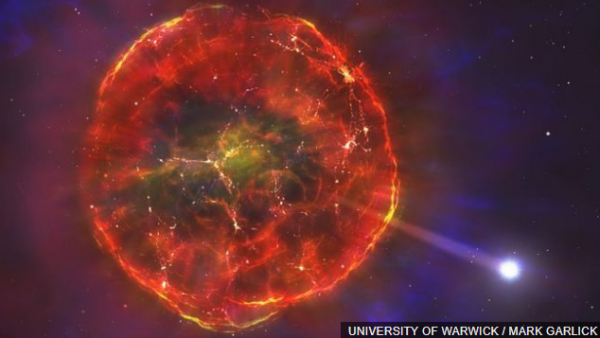
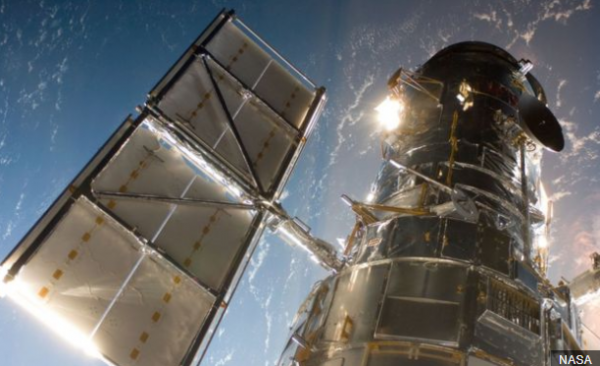

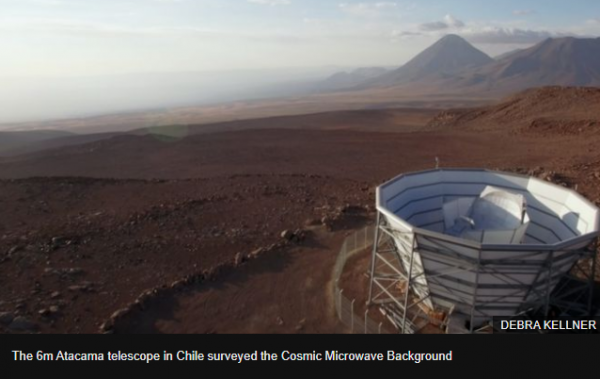
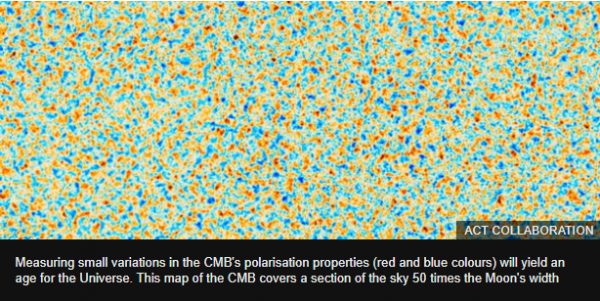
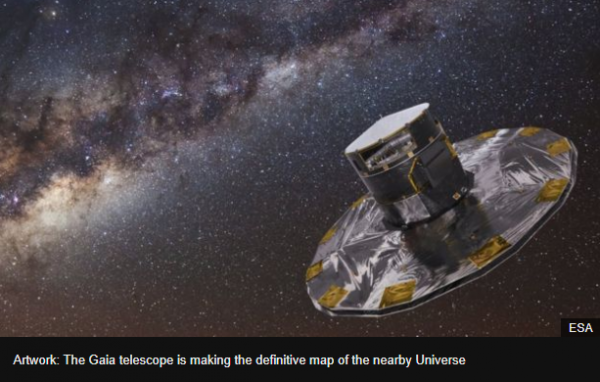

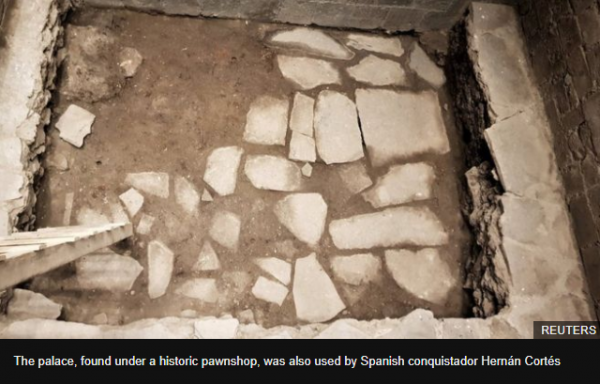
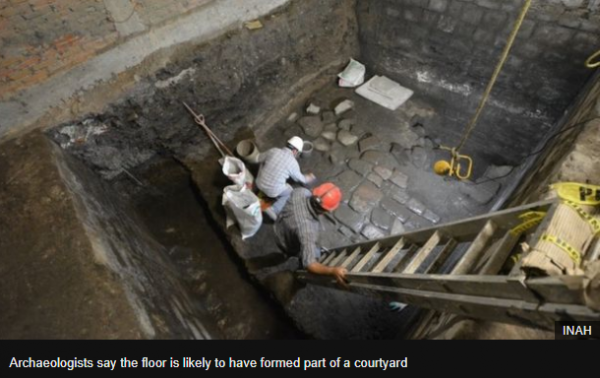
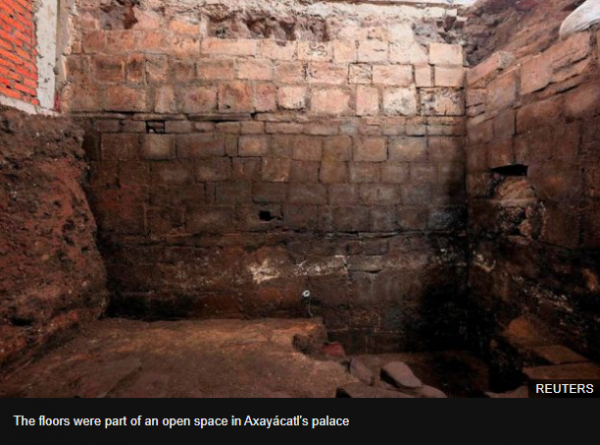



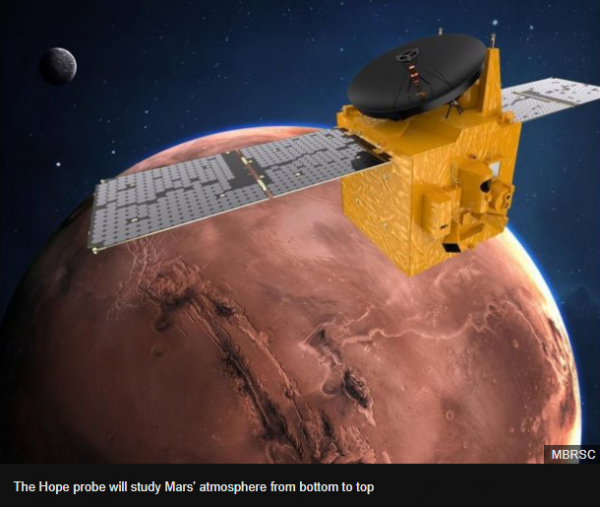




.png.3f4fa22e9014e2526ddd4a0bcb40f676.png)


.thumb.png.35382791e1b1018ec6e373dace740196.png)

.png.4cc5ad37900d8a1d37bdde8903b52481.png)






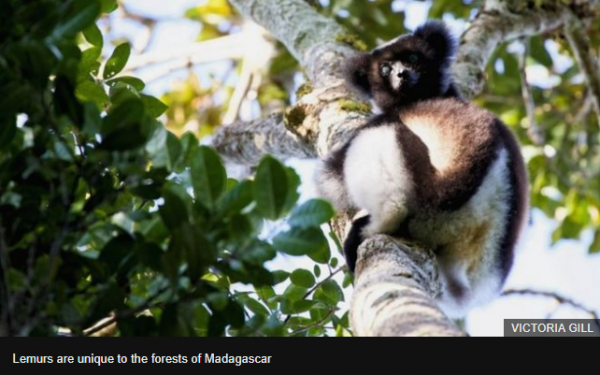
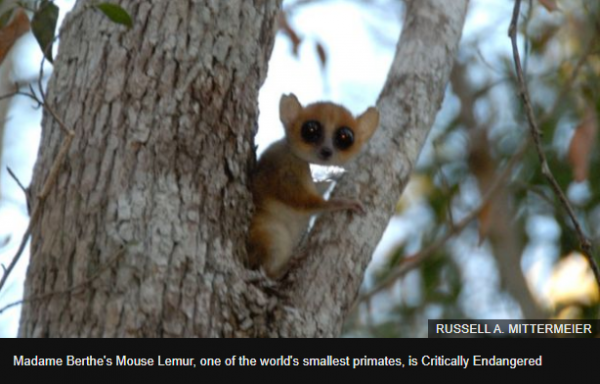
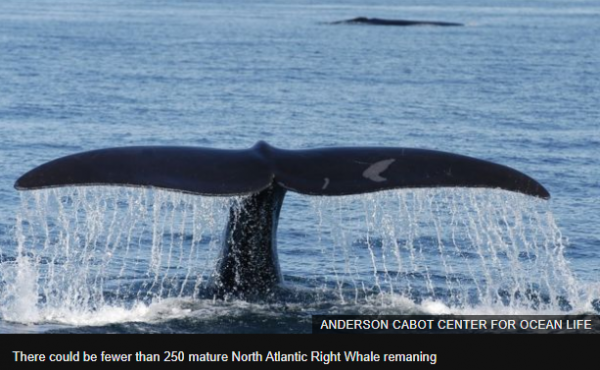
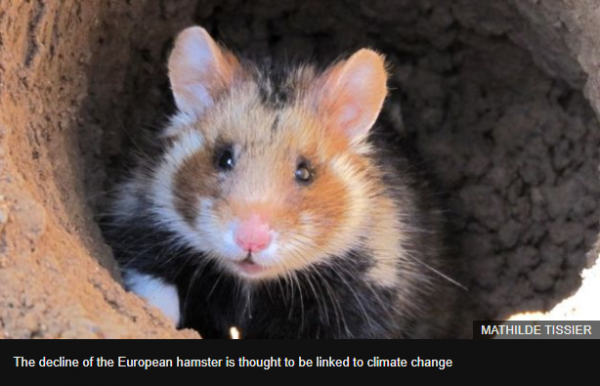

.png.d3c7aed73bc2313cc64b1d18bab4e831.png)